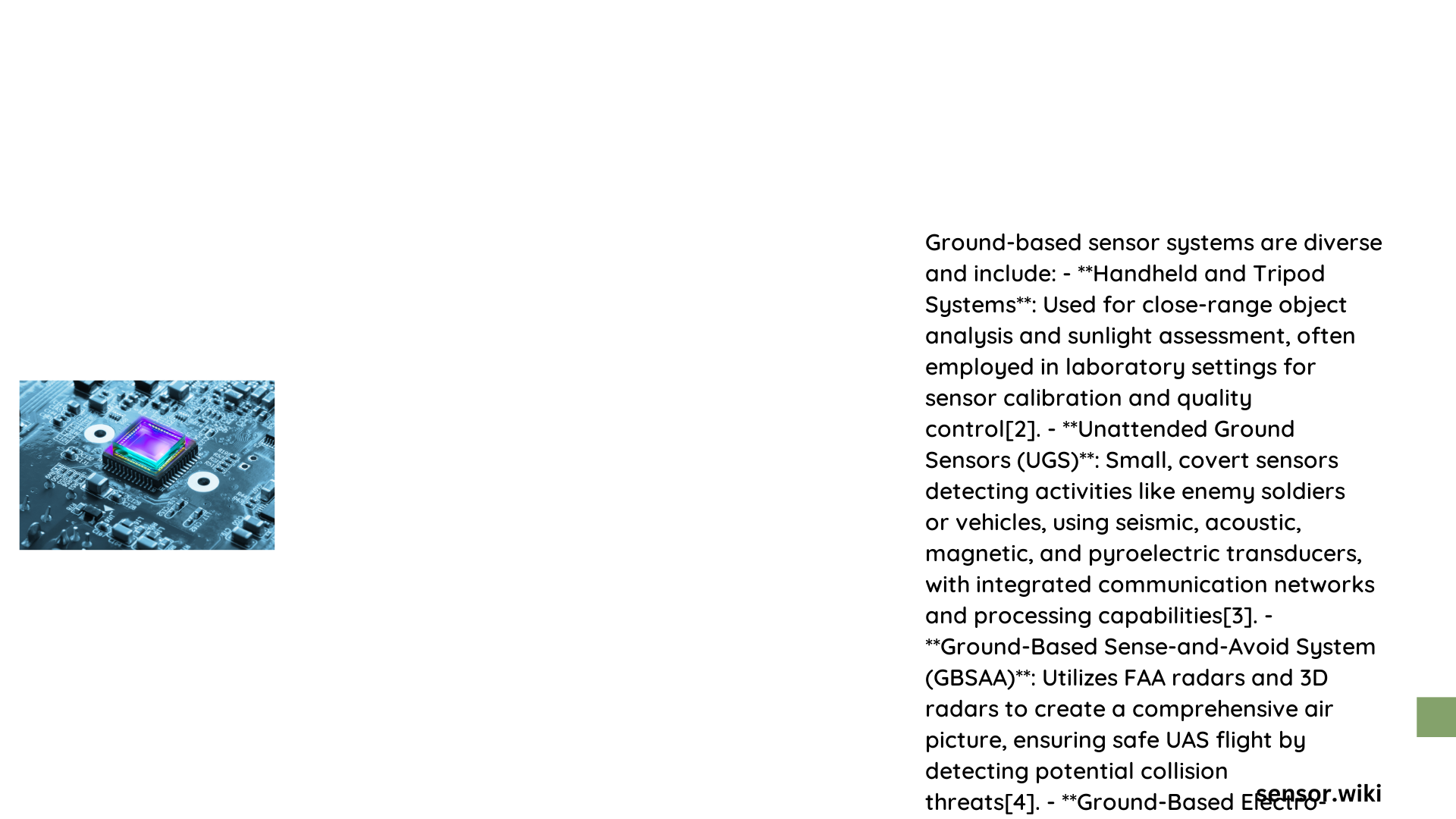Ground Based Sensor System: Advanced Detection and Monitoring Technologies
Technology Overview
Ground-based sensor systems represent sophisticated technological networks designed to detect, track, and analyze environmental and human activities across diverse terrains. These intelligent systems integrate multiple sensor modalities, including seismic, acoustic, electro-optic, and magnetic technologies, to provide comprehensive situational awareness and real-time intelligence gathering.
What Are Ground Based Sensor Systems?
Ground-based sensor systems are advanced technological networks comprising multiple sensor nodes strategically deployed to monitor specific geographical areas. These systems leverage sophisticated detection technologies to capture, process, and transmit critical environmental and movement data.
Key Components of Ground Based Sensor Systems
| Sensor Type | Primary Function | Detection Range |
|---|---|---|
| Seismic Sensors | Detect ground vibrations | 100-500 meters |
| Acoustic Sensors | Capture sound waves | 200-800 meters |
| Electro-Optic Sensors | Visual image capture | Variable |
| Magnetic Sensors | Detect magnetic field changes | 50-250 meters |
How Do Ground Based Sensor Systems Work?
Ground-based sensor systems operate through interconnected intelligent nodes that:
- Capture multi-dimensional environmental data
- Process signals using advanced algorithms
- Communicate real-time information through networked gateways
- Classify and identify potential targets with high accuracy
What Technologies Enable Advanced Sensor Performance?
Several cutting-edge technologies enhance ground-based sensor system capabilities:
- Intelligent Node Architecture
- Multi-element sensor arrays
- Advanced signal processing algorithms
-
Two-way communication protocols
-
Network-Centric Design
- Seamless data transmission
- Integrated GPS positioning
-
Real-time environmental compensation
-
Machine Learning Integration
- Automated target classification
- Predictive analysis capabilities
- Reduced false alarm rates
Where Are Ground Based Sensor Systems Deployed?
Ground-based sensor systems find critical applications across multiple domains:
- Military Surveillance
- Border Security
- Critical Infrastructure Protection
- Environmental Monitoring
- Urban Safety Management
What Are the Performance Metrics?
Performance metrics for ground-based sensor systems include:
- Detection accuracy: 90-99%
- False alarm reduction: Up to 70%
- Operational range: 100-1000 meters
- Power efficiency: Extended battery life
- Environmental adaptability: Extreme temperature resistance
Emerging Technological Trends
Future ground-based sensor systems are evolving towards:
- Miniaturization
- Enhanced artificial intelligence integration
- Lower power consumption
- Increased network resilience
- Multispectral sensing capabilities
Technical Challenges and Solutions
| Challenge | Innovative Solution |
|---|---|
| Signal Interference | Advanced filtering algorithms |
| Power Limitations | Solar and energy harvesting technologies |
| Environmental Durability | Ruggedized sensor enclosures |
Conclusion
Ground-based sensor systems represent a transformative technology enabling unprecedented environmental monitoring and situational awareness across complex operational landscapes.

